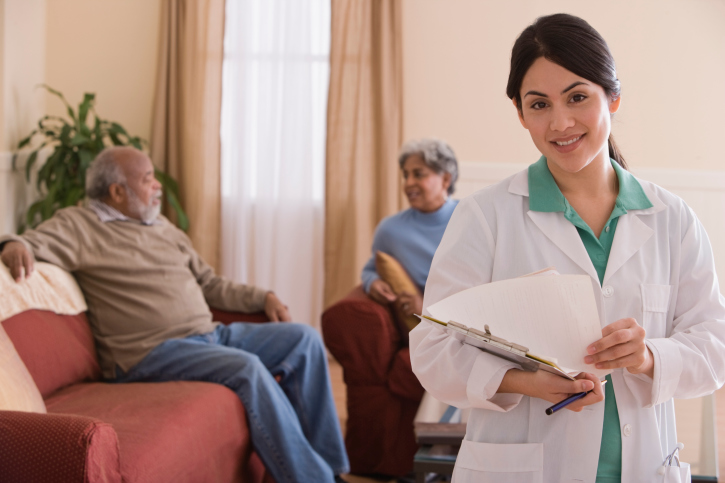First Aid Basics
It’s important to be comfortable and familiar with the basics of first aid care, and to make sure you have the necessary supplies on hand. Read on to learn how you can be prepared for some common situations that require first aid.
How to treat cuts and scrapes
Below are the steps you should take to properly care for minor wounds, such as cuts and scrapes, to help avoid infection or other problems:
- Stop the bleeding with direct pressure. If cuts or scrapes don’t stop bleeding on their own, apply gentle pressure to the wound with a clean cloth or bandage. Apply constant pressure for 20 to 30 minutes. Keep the wound raised, if possible. If the bleeding is serious and doesn’t stop, seek medical attention as soon as possible.
- Wash your hands with soap or antibacterial cleanser to prevent further infection.
- Wash the wound well with clear water. The area around the wound can be cleaned with soap and a washcloth.
- Remove dirt or debris that stays in the wound after washing, using tweezers cleaned with alcohol. You can also use a saline wound wash. If you can’t get the dirt out of the wound, see your healthcare provider to have it thoroughly cleaned.
- Apply a thin layer of topical antibiotic cream or ointment directly to the wound with a cotton swab or cotton ball. This can help prevent infection and promote natural healing. Stop using the product if a rash appears after use.
- Apply a clean bandage that will not stick to the wound. This will help keep the wound clean and prevent harmful bacteria from getting into the wound.
Covering wounds
Keep your wound covered while it is healing to prevent infection and to allow a scab to form. The bandage should be changed at least once a day or more often if it gets wet or soiled. Once the wound is dry, has formed a solid scab and is not tender, you can take off the bandage so that the air can help it fully heal.
Topical antibiotic ointments
Over-the-counter (OTC) topical antibiotics kill a broad range of bacteria. Triple antibiotics are effective against three of the most common skin bacteria. Antibiotic ointment packets and pumps are convenient new options.
Both adults and children can use OTC topical antibiotics. Products that combine antibiotics with pain relief are labeled for use on children 2 years and older. Do not use topical antibiotics on children for more than five days. If your child develops any kind of rash or skin irritation after using the antibiotic ointment, stop using it and contact your child’s healthcare provider.
When to contact your healthcare provider
Speak to your healthcare provider if you have signs of an infection, such as redness, increasing pain, drainage, warmth or swelling. If you have a deep wound or if your bandage does not keep your wound closed, you may need stitches. Go to your healthcare provider as soon as possible to reduce the risk of infection and scarring.
Using gauze and tape
Gauze and tape are most effective for larger cuts and scrapes that bandages may not cover.
Gauze pads come in different sizes and thicknesses. Thicker pads provide better cushioning and protection from re-injury. They also allow for greater absorbency, and they don’t have to be changed as often as thinner pads do. Nonstick pads feature a special type of gauze that does not stick to wounds and is designed to cover larger scrapes.
Causes of itchy skin
- Dry skin occurs when the top layer of skin loses moisture.
- Insect bites can cause an intense, local reaction. Symptoms include inflammation, irritation and itchy skin.
- Poisonous plant skin reactions come from exposure to certain plants, such as poison ivy, poison oak and poison sumac.
- These plants contain a chemical called urushiol that can cause inflammation of the skin, known as contact dermatitis. Contact dermatitis is an inflammation of the skin caused by direct contact with an irritating or allergy-causing substance.
Preventing skin dryness and irritation
One of the most common causes of itching is dry skin, so try the following:
- Take short, warm showers and baths. Hot water tends to dry out the skin.
- Pat—do not rub—yourself dry after bathing, leaving a bit of water on the skin.
- Keep your skin moist by applying a fragrance-free moisturizer. Creams work best to seal in moisture when applied to skin that is slightly wet, so moisturizing after bathing is ideal.
- Avoid sunburn by applying sunscreen frequently or wearing protective clothing on sunny days.
- Avoid harsh detergents, perfumed soaps and heavily fragranced lotions that could irritate the skin.
- Use a humidifier in the home.
Lice facts
Head lice is a scalp infection caused by tiny gray bugs that move quickly and are hard to see. It can cause tickling and itching of the scalp, or a rash on the back of the neck.
Lice occurs commonly in school age children. Nits are eggs that hatch into lice in about seven days, and their white color makes them easier to see. Nits stick to the hair shafts near the skin and can’t be shaken off. Adult lice live three weeks on the scalp or 24 hours off the scalp. It’s the live lice—not the nits—that transmit lice from one child to another.
Lice spread directly from one head of hair to another or, less often, indirectly from hats, caps, hairbrushes, combs, headphones and other objects. Lice spreads most often at home, from sleepovers and bed sharing. Less commonly, it is spread at school, camp or other public places.
Treatments for head lice
The recommended initial treatment for most head lice is 1% Permethrin lotion, with a second application 7 to 10 days later. Follow directions carefully. If your child is under 2 months old, or if it is a difficult case of head lice, ask your pediatrician for guidance. Children can usually return to school after one treatment with anti-lice shampoo.
How to make a first aid kit
A well-stocked first aid kit is an essential item for your family at home or on the road. You may have different versions of the first aid kit: a larger one for your home or car and a smaller one for your purse or backpack. You can buy an already assembled first aid kit, or you can put one together yourself. Your first aid kits should always include:
- Adhesive tape
- Scissors and tweezers
- Alcohol pads
- Antibacterial soap
- Antibiotic ointment
- Cold pack
- Gauze pads and rolled gauze in assorted sizes and thicknesses
- Stretch fabric bandages for sprains
- Adhesive bandages in assorted sizes
- Hand sanitizer
- Disposable gloves
Special first aid kits
Your family may need first aid kits with more specialized tools. These include:
- Emergency epinephrine kits for those allergic to bee stings
- Glucagon emergency kits for people with diabetes who are prone to low blood glucose
Keeping your children safe in the home
Here are some basic steps you can take to help your child avoid injuries in the home.
- Bookshelves: Bolt them, and other climbable furniture, to the wall.
- Toys: Repair broken toys or throw them away. Keep small toys, batteries and other choking hazards away from babies and toddlers.
- Halls and stairways: Make sure they are not cluttered, and that they have enough lighting to prevent trips and falls. Use safety gates if you have a toddler in the house.
- Medicines and poisons: Make sure medicines and other poisons are stored out of reach of children, in a locked cabinet. Post the number for poison control by all of your phones.
Keeping your children safe outdoors
- Riding bikes: Make sure your child always wears a properly fitted helmet while riding.
- On the playground: Check to ensure that the equipment is age-appropriate and properly maintained. Look for an adequate soft surface under the equipment in case of falls.
- In the street: Do not let your child play games or ride a bike in the street or near busy intersections.
- Crossing streets: Be sure to hold your child’s hand when crossing the street or walking to your car in a parking lot.
Have the following information ready if you call emergency services
- Your name
- Telephone number from where the call is being made
- Exact location or address of the emergency
- A description of the victim’s condition, what happened to cause the injury, how many people are involved and what aid has already been given
DO NOT HANG UP until the dispatcher has hung up; the dispatcher may be able to provide instructions on what you can do to help the victim.





